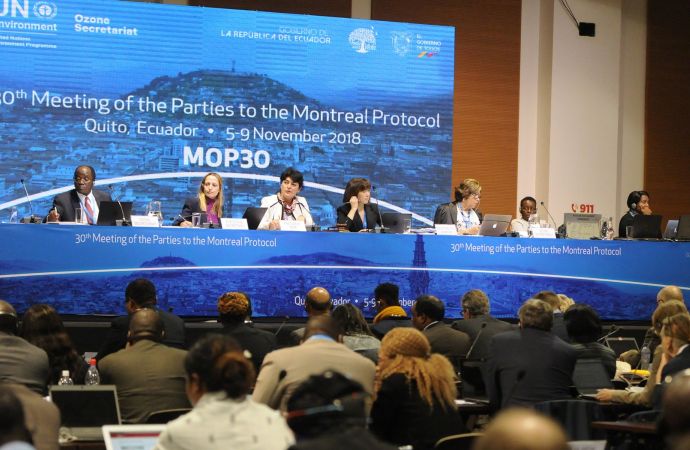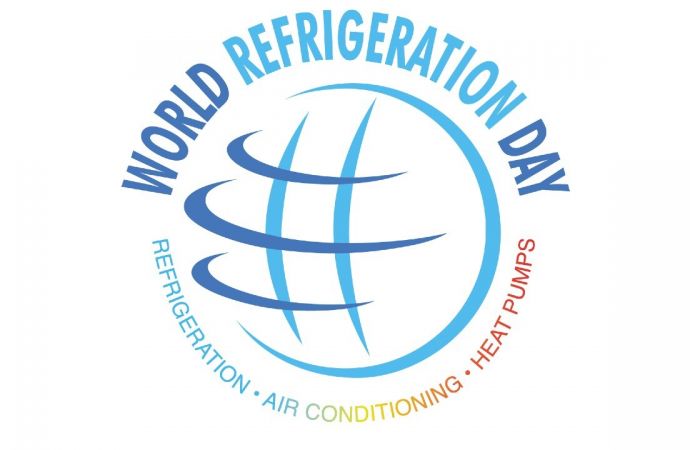The Parties to the Montreal Protocol adopted on Friday 9 November a decision committing all Parties to provide available data on illegal use and production of CFC-11 in their countries.

L-R: Gilbert Bankobeza, Ozone Secretariat; Tina Birmpili, Executive Secretary, Ozone Secretariat; MOP 30 President Liana Ghahramanyan, Armenia; and Megumi Seki, Deputy Executive Secretary, Ozone Secretariat; Martha Leyva, Jacqueline Nyanjui, and Martha Mulumba, Ozone Secretariat.
Photo by IISD/ENB | Angeles Estrada
At the 30th Meeting of the Parties to the Montreal Protocol (MOP 30) in Quito, Ecuador last week, the Parties committed to provide all available data on the illegal use and production of ozone-depleting CFC-11, to enable the relevant Montreal Protocol bodies to act to ensure compliance with the United Nations environmental treaty.
The decision followed the presentation at MOP 30 of the Environmental Investigation Agency's (EIA) latest report on the potential impact on the ozone layer of continuing to use CFC-11 in China.
Each Party will need to take measures to ensure the phase-out of CFC-11 in their countries is sustained, and to share information on any illegal use or production of CFC-11 to the relevant bodies of the Montreal Protocol.
In an open letter to British daily newspaper the Guardian, Zeng Rong, spokesperson of the Chinese embassy in the United Kingdom, announced on 5 August 2018 that the Chinese government had taken action to investigate and enforce its laws regarding Ozone Depleting Substance (ODS) production and use.
“China will continue cracking down on illegal production and use of ODSs and strengthen regulation over relevant industries. Meanwhile, China is willing to further strengthen cooperation with other countries to ensure the effective and continuous implementation of the Montreal protocol,” Zeng Rong wrote.
Responding to China’s efforts and the Montreal Protocol Parties' latest decision, Avipsa Mahapatra, climate campaign lead in the EIA's US office, said: “The unprecedented enforcement actions reported by China and the unanimous support for tasking Montreal Protocol institutions to get to the bottom of this issue within months of the scientific alarm bells is an example of why the Montreal Protocol is often hailed as the most successful environmental treaty.”
“However, it is critical to invest in systemic changes to aid continued compliance and also address the related issue of refrigerant banks, which could avoid up to 97 billion tonnes of carbon emissions equivalent globally between 2020 and 2050,” Mahapatra added.
The new EIA report, 'Tip of the Iceberg: Implications of Illegal CFC Production and Use,' follows an EIA report released in July alleging that CFC-11 was used by 18 Chinese companies as a blowing agent in the production of polyurethane (PU) foam. That report followed the publication of another in Nature in May concluding that emissions of CFC-11 had been increasing at a rate of 25+/-13% since 2012 in East Asia.
Related stories



